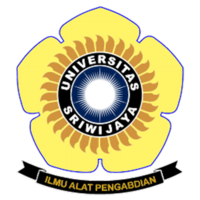Ameliorasi Lahan Gambut dan Keragaan Produktivitas Berbagai Varietas Unggul Baru Adaptif Jagung (Zea mays L.)
Abstract
Nurhayati, N., Swastika, S., Fahroji, F., Yuliani, N., Widyanto, H., Ritonga, E., Jubaedah, J., & Lbs, A. (2023). Peatland amelioration and productivity performance of various new superior varieties of corn (Zea mays L.). In: Herlinda S et al. (Eds.), Prosiding Seminar Nasional Lahan Suboptimal ke-11 Tahun 2023, Palembang 21 Oktober 2023. (pp. 54-64). Palembang: Penerbit & Percetakan Universitas Sriwijaya (UNSRI).
Peatlands are organic soils that have varied characteristics and generally have low fertility. Corn plants growing on peat often experience problems in terms of nutrient availability. This research aimed to determine the productivity performance of several New Superior Varieties (NSV) of corn on peatlands treated with ameliorant. The research method used Factorial Randomized Block Design with 2 factors and 3 replications. The first factor is the corn variety and the second factor is the type of ameliorant. The ameliorant used was sourced from agricultural waste, namely empty palm fruit bunch compost, chicken manure compost and rice husk biochar. Observations made included peatland characteristics, plant growth, corn production, and farming business analysis. The thickness of the peat ranges from 40-60 cm, classified as shallow peat with sapric peat maturity level. The results of the study showed that there was no interaction between the provision of ameliorant and corn plant varieties on the vegetative growth of corn plants. The highest cob length was obtained for Nasa 29 and Bima 20 Uri varieties. The hybrid corn varieties Nasa 29, Bima 2, and Bima 20 Uri were able to adapt and produce on peatlands, respectively 2.8 t/ha; 3.2 t/ha, and 3.3 t/ha. NSV of corn technology and peatland amelioration can increase farmers' income.
Keywords
Full Text:
PDFArticle Metrics
Abstract view : 370 timesPDF - 315 times
Refbacks
- There are currently no refbacks.

